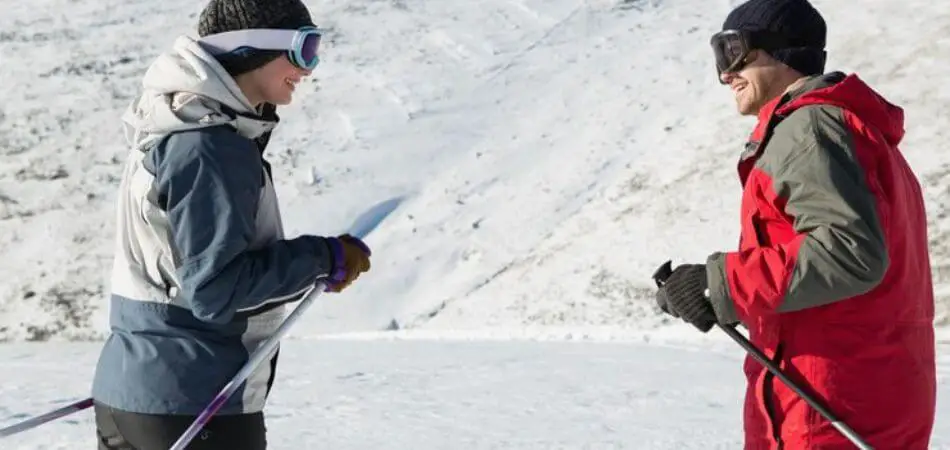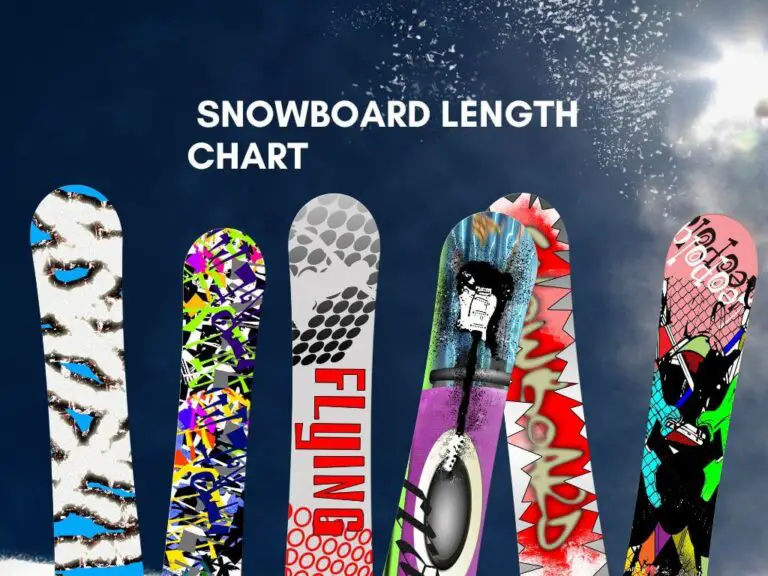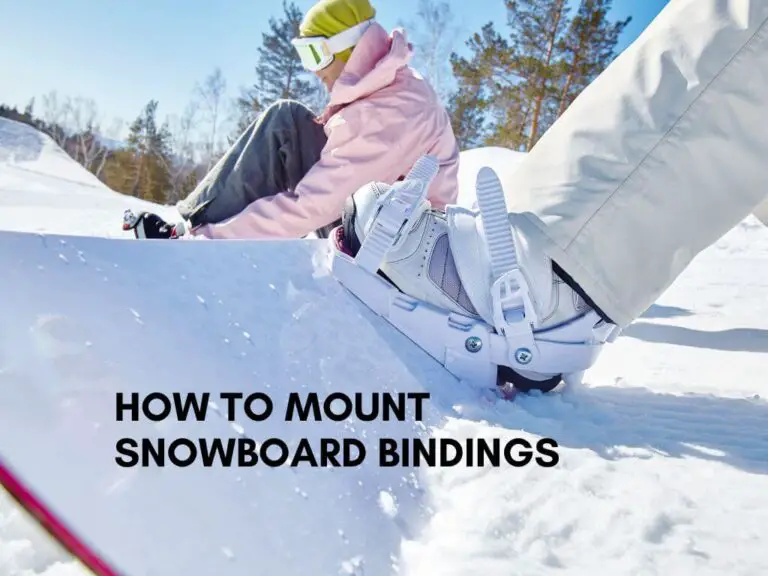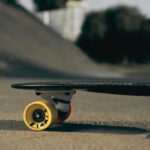When it comes to snowboarding, having the right gear can make or break your experience on the mountain. One of the most critical aspects of choosing the perfect snowboard is knowing how to measure a snowboard correctly. Whether you’re a seasoned rider or a beginner gearing up for your first adventure, understanding the proper measurements ensures optimal performance, control, and comfort.
In this guide, we’ll break down everything you need to know about measuring a snowboard, from length and width to flex and stance, so you can hit the slopes with confidence. Let’s dive in and unlock the secrets to finding your ideal snowboard match!
Choosing The Right Snowboard Size
Choosing the right snowboard size is crucial for a great riding experience. The size of your snowboard affects your control, balance, and overall performance on the slopes. It’s important to consider several factors to find the perfect fit for your needs and style.
Consider Your Weight
Your weight plays a significant role in selecting the correct snowboard size. A board that is too short or too long can impact your balance and control. Here’s how to gauge the right size based on your weight:
Most snowboard sizing charts provide a range of lengths suitable for different weight classes. Below is a general guideline:
| Weight (lbs) | Snowboard Length (cm) |
|---|---|
| 80-110 | 128-136 |
| 110-140 | 135-146 |
| 140-175 | 144-154 |
| 175-210 | 152-163 |
| 210+ | 159-168 |
It’s important to stay within these ranges to ensure optimal performance. A heavier rider should opt for a longer board for better stability and float. Conversely, a lighter rider should choose a shorter board for increased maneuverability.
Tip: Always refer to the manufacturer’s specific sizing chart, as they may have different recommendations.
Determine Your Riding Style
Your riding style is another key factor in selecting the right snowboard size. Different styles require different board lengths and characteristics:
- Freestyle: If you enjoy tricks and jumps, a shorter board (between your chin and shoulders) is ideal. It offers better agility and control.
- All-Mountain: For a versatile experience on various terrains, choose a board that reaches from your chin to your nose. This provides a balance of stability and maneuverability.
- Freeride: For those who love riding powder and carving, a longer board (reaching your nose or higher) is best. It offers better float and stability in deep snow.
Matching your board length to your riding style ensures you get the best performance. For instance, a freestyle rider on a long board may find it hard to perform tricks. On the other hand, a freeride enthusiast on a short board might struggle with stability in deep snow.
Remember: Your snowboard should complement your riding style to maximize fun and safety on the slopes.
Understanding Snowboard Length
Choosing the right snowboard length is crucial for an enjoyable ride. Understanding snowboard length helps you pick the perfect board for your style and skill level. The length of a snowboard impacts control, speed, and maneuverability. Let’s dive into the key factors of snowboard length and how they affect your snowboarding experience.
Effects Of Snowboard Length
A snowboard’s length directly influences its performance. Longer snowboards provide stability at higher speeds but can be harder to maneuver. Shorter snowboards are easier to turn and control but might lack stability for aggressive riding. Here’s a breakdown of how length affects your ride:
- Stability: Longer boards offer more stability, making them ideal for fast descents and powder riding.
- Maneuverability: Shorter boards are easier to turn, perfect for park tricks and tight trails.
- Floatation: In deep snow, longer boards float better, providing a smoother ride.
- Control: Beginners often find shorter boards easier to control and balance.
Consider your riding style, skill level, and the terrain when choosing snowboard length. For example, if you love carving down groomed runs, a longer board might suit you. If you enjoy quick turns and tricks, opt for a shorter board.
Sizing Chart
To simplify choosing the right snowboard length, refer to a sizing chart. These charts consider your height and weight to suggest the ideal board length. Below is a general sizing chart:
| Rider Height (cm) | Weight (kg) | Snowboard Length (cm) |
|---|---|---|
| 140-150 | 40-50 | 130-140 |
| 150-160 | 50-60 | 140-150 |
| 160-170 | 60-70 | 150-160 |
| 170-180 | 70-80 | 160-170 |
| 180-190 | 80-90 | 170-180 |
Use this chart as a starting point. Personal preference plays a big role. Some riders prefer a shorter board for flexibility, while others like the speed of a longer board. Adjust based on your comfort and riding style.
Remember, the right snowboard length enhances your experience on the slopes. Use the sizing chart and consider the effects of length to find your perfect fit.

Measuring Snowboard Width
Measuring a snowboard accurately ensures you get the best performance on the slopes. One critical aspect is the snowboard’s width. Knowing how to measure snowboard width helps you choose the right board for your needs, offering better control and stability.
Importance Of Width
The width of a snowboard is vital for several reasons. A board that’s too narrow or too wide can significantly impact your snowboarding experience. Here are some key points to consider:
- Foot Size Compatibility: If your snowboard is too narrow, your boots will overhang, leading to potential drag and instability. If it’s too wide, you may struggle with control.
- Stability: A wider board offers more stability, especially at high speeds and on powder. This is crucial for riders who prefer off-piste adventures.
- Edge Control: Proper width ensures better edge control. This is particularly important for carving and making sharp turns.
- Performance: The right width enhances overall performance, making your rides smoother and more enjoyable.
Below is a quick reference table to help you understand the ideal snowboard width based on your boot size:
| Boot Size | Ideal Snowboard Width |
|---|---|
| 6-8 | 24-25cm |
| 8.5-10.5 | 25-26cm |
| 11-13 | 26-27cm |
Steps To Measure Width
Measuring the width of a snowboard is straightforward. Follow these steps to ensure accuracy:
- Place the Board on a Flat Surface: Lay your snowboard flat on a table or the floor. Ensure there are no obstacles around.
- Locate the Waist Width: The waist width is the narrowest part of the snowboard. It’s usually in the center of the board.
- Use a Measuring Tape: Take a measuring tape and measure across the width at the narrowest point. Ensure the tape is straight for an accurate measurement.
- Record the Measurement: Write down the measurement in centimeters or inches. This number is crucial for determining the right board for your needs.
- Compare with Boot Size: Use the reference table above to match your measurement with your boot size.
Repeat these steps if you need to measure multiple boards. Consistency is key for accurate results.
Assessing Snowboard Flex
Measuring a snowboard involves several key factors, and one of the most crucial is assessing the snowboard flex. The flex of a snowboard affects how it performs on different terrains, making it essential to understand and measure. This guide will help you grasp the importance of flex and how to test it accurately.
Importance Of Flex
Understanding the flex of a snowboard is vital for choosing the right board for your riding style. The flex determines how easily the snowboard bends, influencing its maneuverability and stability.
There are two main types of flex:
- Soft Flex: Easier to control, great for beginners, park riders, and those who prefer a playful ride.
- Stiff Flex: Provides more stability at high speeds, ideal for advanced riders and those who enjoy carving down the slopes.
Let’s break down the importance of flex by riding style:
| Riding Style | Recommended Flex |
|---|---|
| Freestyle | Soft to Medium |
| All-Mountain | Medium |
| Freeride | Medium to Stiff |
Choosing the right flex can make a significant difference in your snowboarding experience. A board with the proper flex will allow you to perform better and enjoy your time on the slopes more.
Testing Flex
Testing the flex of a snowboard is a straightforward process. Here’s how you can do it:
- Place the snowboard on a flat surface: Make sure the board is secure and won’t move.
- Press down on the center: Use your hand to apply pressure to the center of the board. Notice how much it bends.
- Check for even flex: Ensure the board bends evenly from the tip to the tail.
- Compare different boards: Test multiple boards to understand the differences in flex.
Here are some tips to keep in mind:
- Soft flex: Should bend easily with little pressure.
- Stiff flex: Requires more pressure to bend.
- Even flex: Indicates a well-balanced board, suitable for various terrains.
By testing the flex, you can determine which snowboard suits your riding style. This ensures a better fit and performance on the slopes.
Examining Snowboard Camber
Measuring a snowboard involves various factors, and one of the key aspects to consider is the camber. The camber of a snowboard refers to the curve of its base when laid flat on a surface. Examining snowboard camber helps determine the board’s performance, flexibility, and suitability for different riding styles.
Types Of Camber
Snowboards come with different camber profiles, each offering unique characteristics. Understanding these types helps in choosing the right snowboard for your riding style.
Traditional Camber: This type has a gentle arch underfoot, with contact points near the tip and tail.
- Great edge control
- Strong pop and stability
- Ideal for carving and speed
Rocker or Reverse Camber: This profile curves upwards between the feet, resembling a banana shape.
- Enhanced float in powder
- Less edge catch
- Perfect for beginners and park riding
Flat Camber: The base is flat between the feet, with slight rocker near the tip and tail.
- Stable and predictable
- Good for all-mountain riding
- Balances edge hold and float
Hybrid Camber: Combines elements of camber and rocker for a versatile performance.
- Best of both worlds
- Adaptable to various conditions
- Offers a mix of stability and playfulness
Impact On Performance
Different camber profiles affect how a snowboard performs on the mountain.
Traditional Camber: Provides excellent edge hold and powerful turns, suitable for aggressive riders. Its strong pop makes it ideal for jumps and precision.
Rocker Camber: Enhances maneuverability and float in powder. This profile is forgiving, reducing the chances of catching an edge, which is great for beginners and freestyle riders.
Flat Camber: Offers a balanced ride with predictability and stability. It’s suitable for various terrains, making it an excellent choice for all-mountain riding.
Hybrid Camber: Delivers versatility and adaptability, combining the benefits of both camber and rocker. This profile is perfect for riders who want to switch between different terrains and styles without changing their board.
Understanding how camber impacts performance helps in selecting a snowboard that matches your riding preferences and goals.

Checking Snowboard Bindings
Measuring a snowboard is crucial for a comfortable and safe ride. An often overlooked step in this process is checking the snowboard bindings. Proper bindings ensure your boots fit securely, offering better control and performance. Let’s dive into how to check snowboard bindings effectively.
Compatibility With Boots
Ensuring your bindings are compatible with your boots is vital. Bindings and boots must match in size and design. Here’s how you can check:
- Match Boot Size: Bindings come in sizes like small, medium, and large. Check the manufacturer’s size chart to find the right fit.
- Fit Test: Place the boot in the binding. Ensure it fits snugly without being too tight or too loose.
- Strap Compatibility: Verify that the straps can be adjusted to fit the boots securely.
If the boots and bindings are incompatible, you risk poor performance and potential injury. Always double-check the fit before hitting the slopes.
Adjustment For Size
Adjusting bindings to match your boot size is essential for comfort and control. Follow these steps to ensure a perfect fit:
- Loosen the Straps: Start by loosening all the straps on the bindings.
- Position the Boots: Place the boots in the bindings, ensuring the heel is flush against the back.
- Adjust the Straps: Tighten the straps so they hold the boots firmly without pinching.
- Test the Fit: Stand in the bindings and move around. Make sure the boots don’t wiggle.
Proper adjustment is key to a comfortable and secure ride. Always spend time adjusting your bindings before snowboarding.
Testing Snowboard Shape
Measuring a snowboard accurately involves understanding its shape. The shape of a snowboard impacts your riding experience. Testing the snowboard shape helps to determine its suitability for your riding style. This section will guide you on how to measure and test the shape of a snowboard effectively.
Impact On Maneuverability
The shape of a snowboard influences how it handles on the snow. Different shapes offer different levels of maneuverability. Here are key points to consider:
- Directional Shape: Best for riding in one direction. Offers stability and speed.
- True Twin Shape: Symmetrical from tip to tail. Ideal for freestyle riding and tricks.
- Directional Twin Shape: Combines elements of both directional and twin shapes. Good for all-mountain riding.
Consider how the shape affects turning and control:
| Shape | Turning | Control |
|---|---|---|
| Directional | Smooth, long turns | High at high speeds |
| True Twin | Quick, short turns | Great for tricks |
| Directional Twin | Versatile turns | Balanced control |
Evaluate how each shape responds to your movements. Test different shapes to find the one that suits your style best.
Choosing The Right Shape
Selecting the right snowboard shape depends on your riding preferences. Consider the following factors:
- Terrain: Where do you ride most? Powder, groomed trails, parks?
- Riding Style: Are you a freestyle rider, an all-mountain cruiser, or a powder hound?
- Skill Level: Beginners might prefer more forgiving shapes. Advanced riders may need more specialized boards.
Match your snowboard shape to your needs:
| Rider Type | Recommended Shape |
|---|---|
| Freestyle | True Twin |
| All-Mountain | Directional Twin |
| Powder | Directional |
Test the snowboard shape in various conditions. Make sure it meets your expectations in real-world scenarios. The right shape enhances your overall snowboarding experience.
Conclusion & Next Steps
Measuring a snowboard is crucial for enjoying a smooth ride on the slopes. Ensuring your board’s length matches your height, weight, and skill level can make all the difference. Let’s dive into the conclusion and the next steps you need to take.
Final Considerations
Before finalizing your snowboard measurement, there are a few key points to consider:
- Riding Style: Determine your riding style. Freestyle riders often prefer shorter boards for better maneuverability, while freeride enthusiasts may opt for longer boards for stability.
- Snow Conditions: Think about the snow conditions you’ll encounter. Powder conditions might require a longer board for better floatation, while groomed trails might be best suited with a shorter one.
- Skill Level: Beginners usually benefit from shorter boards, which are easier to control. Advanced riders might prefer longer boards for speed and stability.
Here’s a quick reference table to help you:
| Rider Height | Snowboard Length |
|---|---|
| Under 5’2″ | 130-140 cm |
| 5’3″ to 5’6″ | 140-150 cm |
| 5’7″ to 5’10” | 150-160 cm |
| 5’11” and above | 160+ cm |
Where To Seek Further Assistance
Getting the right snowboard fit might still seem daunting. Here are some ways to seek further assistance:
- Local Snowboard Shops: Visit a local shop. The staff can provide personalized advice based on your measurements and preferences.
- Online Forums: Join snowboarding forums. Experienced members often share their tips and recommendations.
- Snowboarding Classes: Sign up for a class. Instructors can help you choose the right board and offer hands-on guidance.
- Manufacturer Guidelines: Check the manufacturer’s website. They usually provide sizing charts and detailed information.
Remember, the right snowboard measurement enhances your performance and safety. Don’t hesitate to seek expert advice to make the best choice.
Frequently Asked Questions
How To Measure A Snowboard With A Tape Measure?
Place the snowboard flat. Align the tape measure from the tip to the tail. Read the length in centimeters.
How To Get Fitted For A Snowboard?
Visit a professional snowboard shop. Stand on a board to check size. Ensure proper boot fit. Consider your riding style. Get expert advice.
How To Figure Out Snowboard Binding Size?
Check the manufacturer’s size chart for snowboard bindings. Match your boot size to the recommended binding size. Ensure a snug fit for control.
How To Measure Stance Width On A Snowboard?
To measure stance width on a snowboard, place your feet shoulder-width apart. Measure the distance between the centers of each foot. Adjust bindings to match this distance for optimal comfort and control.
Conclusion
Measuring a snowboard correctly ensures optimal performance and comfort. Use the right tools and follow the steps carefully. Proper measurements enhance your snowboarding experience. Remember, a well-fitted snowboard can make all the difference on the slopes. Happy snowboarding!








